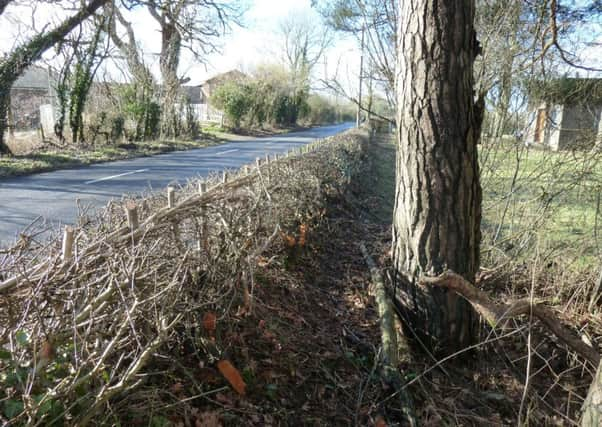Natural habitats given boost in Ditchling


It is one of ten pilot projects being operated by the South East Water developed alongside the Environment Agency and Natural England with the approval of the Department for Environment Food and Rural Affairs (DEFRA).
The aim of the projects is to improve biodiversity and natural habitats on the sites.
Advertisement
Hide AdAdvertisement
Hide AdSouth East Water’s Biodiversity Lead Richard Dyer said: “As a company, we have a responsibility to protect and enhance the natural biodiversity of the sites we own and manage. Our site at Ditchling is one of ten NEP pilot projects where we are demonstrating this commitment.
“We are keen to hear from adjacent landowners if they wish to get involved in helping to stop the spread of Himalayan balsam on their land.”
The old roadside hedge at Ditchling had gaps appearing resulting in it being less suitable for nesting birds and small mammals.
This traditional and attractive country craft of hedge laying produces a dense and stock proof hedge by partly cutting through and bending over selected stems - known as pleachers - to fill in any gaps. Stakes and binders are then added to strengthen the newly laid hedge.
Advertisement
Hide AdAdvertisement
Hide AdNew growth is promoted from the base of the hedge, giving it a new lease of life and improving nesting and feeding opportunities for birds and small mammals such as dormice.
It also has the added benefit of improving site security as it produces a dense impenetrable hedge, and is more attractive than metal fencing.
Although Ditchling is one of South East Water’s smaller sites selected for its NEP pilot projects there are a number of key activities underway to improve its biodiversity generally.
These include improved rotational grassland management to encourage wild flowers, coppicing, scrub control and controlling a non-native invasive plant called Himalayan balsam which has invaded streams in the local area, including the stream running through the Ditchling site.
Advertisement
Hide AdAdvertisement
Hide AdThis plant grows vigorously during the summer months, out-competing other native vegetation but then dies right back in winter, leaving the banks of the stream vulnerable to erosion. To stop the spread of this non-native invasive species the plant is pulled up by the roots before it sets seed in the summer.
The countryside close to Ditchling has been identified as an area that has historically been a popular nesting and breeding ground for turtle doves – a species that is declining nationally.
Under guidance and recommendation from the Royal Society for the Protection of Birds, South East Water is creating landing areas for turtle doves in the meadows by regularly cutting small circular areas within the longer vegetation. This allows the birds to land easily before walking in to and feeding on seeds in the surrounding longer vegetation.
Don’t miss out on all the latest breaking news where you live.
Advertisement
Hide AdAdvertisement
Hide AdHere are four ways you can be sure you’ll be amongst the first to know what’s going on.
1) Make our website your homepage
2) Like our Facebook page
3) Follow us on Twitter
4) Register with us by clicking on ‘sign in’ (top right corner). You can then receive our daily newsletter AND add your point of view to stories that you read here.
And do share with your family and friends - so they don’t miss out!
Always the first with your local news.
Be part of it.